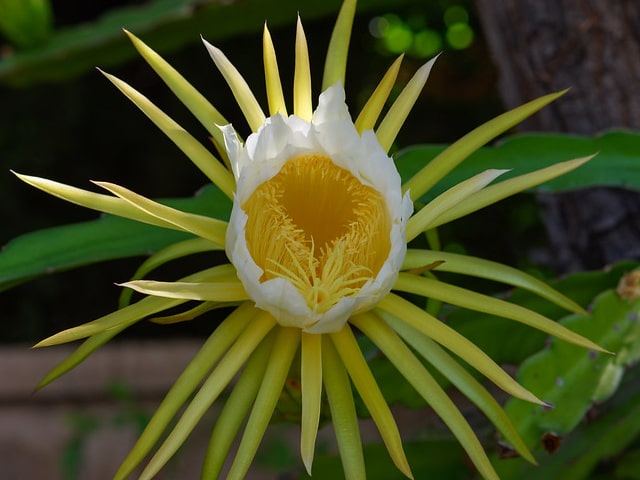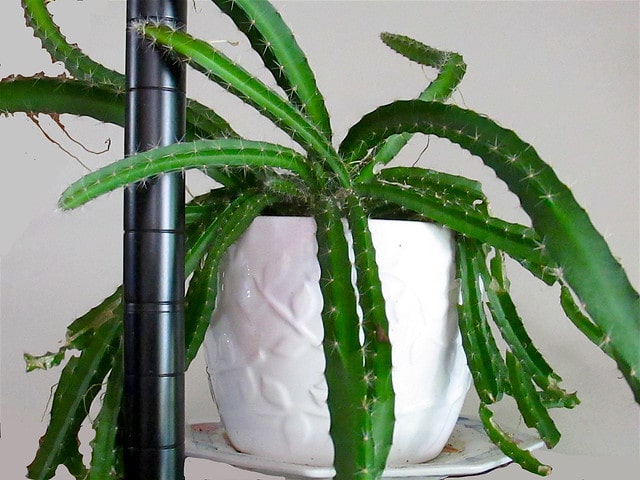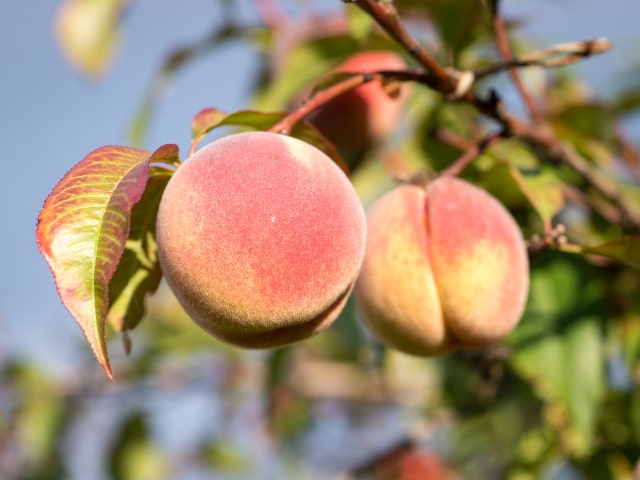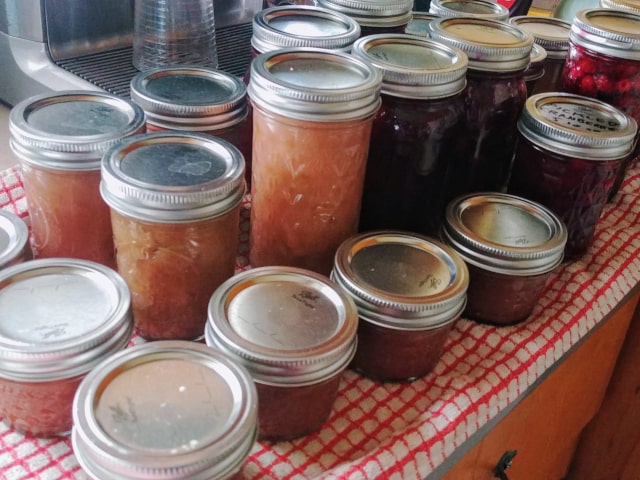
Dragon fruit (pitaya) is a gorgeous cactus plant that grows in Mexico, parts of South America and in Asia. The main growing regions for this cactus are Colombia, Mexico, Ecuador and Nicaragua, and in Asia: Thailand, Taiwan, Vietnam, Singapore, Sri Lanka, Indonesia and Israel. Because it is rarely grown in North America, it is not so well-known in this area. However, this doesn't mean that you can't have a beautiful dragon fruit plant in your home if you wish so. Dragon fruit is a plant known by many names, such as Belle of the Night, Cactus Fruit, Kaktus madu, Night Blooming Cereus, Buah Naga, Thanh Long, Thai Kaeo Mangkon and Nanettika Fruit. You can use this cactus as an ornamental plant, and you can also eat its delicious fruit. You might not know, but dragon fruit is often used in wine, fruit juice, jams and ice cream.
Dragon fruit is also famous for its amazing flowers. These cacti have some of the largest flowers in the world. However, more than their size, dragon fruit's flowers are famous because they only open for one night. They have exotic, fruity scent that made this cactus famous.
It is important to note that there are numerous health benefits of consuming fruit from Dragon frit plant. Here are some of the most important benefits that you can use if you grow Dragon fruit in your home:
Dragon fruit plant can boost your immune system, because the fruit contains high levels of vitamin C.
- This fruit is also high in other vitamins, which helps keeping optimal health.
- The fruit doesn't contain any cholesterol, which makes this plant excellent for your heart and cardiovascular system.
- Dragon fruit contains carotene, which means that it has anti-carcinogenic properties.
- This fruit can help you improve metabolism and digestive system.
- These are just some of the great reasons to consider growing Dragon fruit in your garden.
Before you learn how to grow dragon fruit, it is important to learn about many different types of this cacti that you can encounter.
Three Types of Dragon Fruit
There are three main types of dragon fruit plant that you can grow. These three varieties are:
- Hylocereus Undatus ‐ This variety of Dragon fruit has shell that is red in color, while the flesh of the fruit is white. This is a variety that can be found in many gardens and homes.
- Hylocereus Costaricensis ‐ This variety of Dragon fruit also has red shell. However, with this type of Dargon fruit, the flesh is also red in color. Often, the flesh has such a deep red coloration that it looks almost blood-like.
- Hylocereus Megalanthus ‐ This variety of Dragon fruit has a thorny shell of a fruit. The shell is yellow in color while the flesh itself is white. Since the shell is thornier than other varieties, it is rarer to grow in a garden.
It is important to know that all three varieties have green fruit until it's ripe. Once it is ripe, the fruit will be some shade of red or it will be bright yellow. The fruit of all varieties is filled with tiny seeds that look like kiwi fruit seeds.
Growing Dragon Fruit
It is important to understand that Dragon fruit is very different than most cactus plants. It is a climbing plant and it needs some support to grow properly. Also, keep in mind that it is a sub-tropical plant that requires a lot of heat and humidity.
The good news is that Dragon fruit plants are relatively easy to grow, compared to other fruit-bearing plants. Yes, you will need to invest some time and care into them, but they are simple enough to maintain. They are not only healthy, but also look gorgeous in your garden.
The growing season for Dragon fruit plant is during the hot summer months. Keep in mind that your plant will not grow during the rest of the year, particularly during the cold months. However, when it grows, Dragon fruit grows rapidly. You can expect blooms to appear from July to October, but each flower will bloom for only one night per year. After the blooming, you can expect fruits to form. One Dragon fruit plant can produce plenty of fruit for about 20 to 30 years, which means you will have plenty of tasty fruit each year for a long time.
Since Dragon fruit is a sub-tropical plant, you can't grow it in your garden if you live in cold climates. However, you can still enjoy Dragon fruit as a potted plant. This is a great option for those in colder climates: growing it in a pot is a great way to enjoy this gorgeous plant. You can leave it outdoors while it is hot and then move your plant indoors once the weather starts getting cold. If you choose to grow your Dragon fruit in a pot, make sure to choose a large enough container. Aim for at least a 15-gallon pot. Also, make sure that the pot is well-draining, so your Dragon fruit never sits in water. Sitting in water can cause root rot, which is something you wan to avoid.
Here are the main requirements for growing Dragon fruit:
Soil
The good news is that this cactus can grow in any type of soil that is well-draining. However, to make it thrive, make sure to grow it in a slightly acidic soil. The pH levels of the soil should ideally be between 6 and 7. The best option for growing Dragon fruit is sandy soil. However, if this is not available, just make sure that the soil is well-draining.
Temperature
Dragon fruit plant doesn't do well in cold climates. It is important to ensure that it grows in temperatures above 40 degrees Fahrenheit. This is minimum temperature needed for preventing damages to the plant. However, keep in mind that this is just the minimum: for the optimal growth, and to make your plant thrive, keep it at temperatures between 65 and 80 degrees Fahrenheit.
Light
It is important to provide your Dragon fruit with plenty of light. While it is fine for the base of the plant to see a bit of a shade, the tips of the plant require full sun. This is the only way to make sure that your Dragon fruit blooms properly. The fruit will not develop properly if the plant is in too much shade.
Water
Dragon fruit is a cactus plant, so it has specific watering requirements. You should only water your Dragon fruit plant when the top of the soil is dry to the touch. Never allow your plant to sit in water. After watering, the soil needs to be moist but not soaked. Follow these instructions carefully to avoid overwatering.
Fertilizer
Dragon fruit will benefit from some fertilizer so it can grow properly and thrive. It is best to fertilize it every month during the active growing season. Make sure to stop fertilizing your Dragon fruit during the cold winter months.
Pollination
When it comes to pollination, keep in mind that bats, bees and moths pollinate some varieties of Dragon fruit, but not all. This is where you need to use hand pollination. Simply collect pollen from two different dragon fruit plants. To pollinate, use a cotton swab to place pollen onto the stigma of the other plant. This will ensure cross-pollination. Make sure to do this during the night. The best time is between 8 PM and 8 AM. In case you want to pollinate different plants, make sure to use a new cotton swab for each. Once it is pollinated, your plant will take about a month to grow its fruit.
Diseases and Pests
Probably the most common disease you can encounter with your Dragon fruit plant are Dragon Spots. This happens on the leaves and stems, and it's a sign of an infection. Bacteria can also cause other problems, such as soft stem rot. This disease affects the ends of branches. These diseases are typically transferred from plant to plant. This is why it's important to always use sterilized clippers for working with Dragon fruit plants. Another issue you may encounter is sunburn. This can happen during the hottest months of the year. Also, too much water can cause a serious problem of root rot. This is why you should never leave your Dragon fruit sitting in water.
Dragon fruit has two common pests: mealybugs and aphids. These pests like to suck sap from the plant and feed on it. Another issue is that aphids also attract ants, so those will start to feed on the plant's sweet sap. Watch for mites and thrips: these pests will not kill the plant, but they are not good for its health.
Propagating Dragon Fruit Plant
There are two main methods of propagation that you can use for your Dragon fruit: propagation from seeds and propagation from cuttings.
Propagation from seeds. To grow your Dragon fruit directly from seeds, you need to collect the seeds from the fruit. Cut the fruit in half and scoop out the seeds. Make sure to separate seeds from the flesh: wash them and let them dry overnight. Use germinating tray to germinate seeds. Plant the seeds in soil and make sure that they are close to the top. Also, ensure that the soil is moist. Once you plant the seeds, cover the soil with plastic wrap until it germinates. This will take about two weeks. Once the seed has germinated, transplant young plants into a larger pot.
Propagation from Cuttings. To grow your Dragon fruit from cuttings, make sure not to take too much from the parent plant. Taking too much can endanger the parent plant and stunt its growth. Another thing is to make sure you start growing cuttings during the summer. This will ensure the best results. To propagate, take a plant cutting that is around one foot long. This section can make 3 to 4 new plants. Make sure to cut this section into 6-inch cuttings. Apply fungicide to the ends and allow cuttings to dry. This will promote better growth. After this, you need to dry or cure the cutting, which takes about 2-5 days. You will know the plants are ready when the tips of the cutting turn white. After this, you can plant cuttings into the soil. Make sure that each cutting is about 2 inches into the soil and oriented in the same direction that it was on the parent plant. Once the cuttings are planted, water them daily, unless you notice the soil still being moist from previous watering. If this happens, skip a day. After some time, you will notice new roots appearing. In case the propagation was successful, you will soon see new growth. This takes about 3 to 4 weeks. After a few years, these new plants will be able to produce their own fruit.
Photo credit: Person-with-No Name




0 Comments